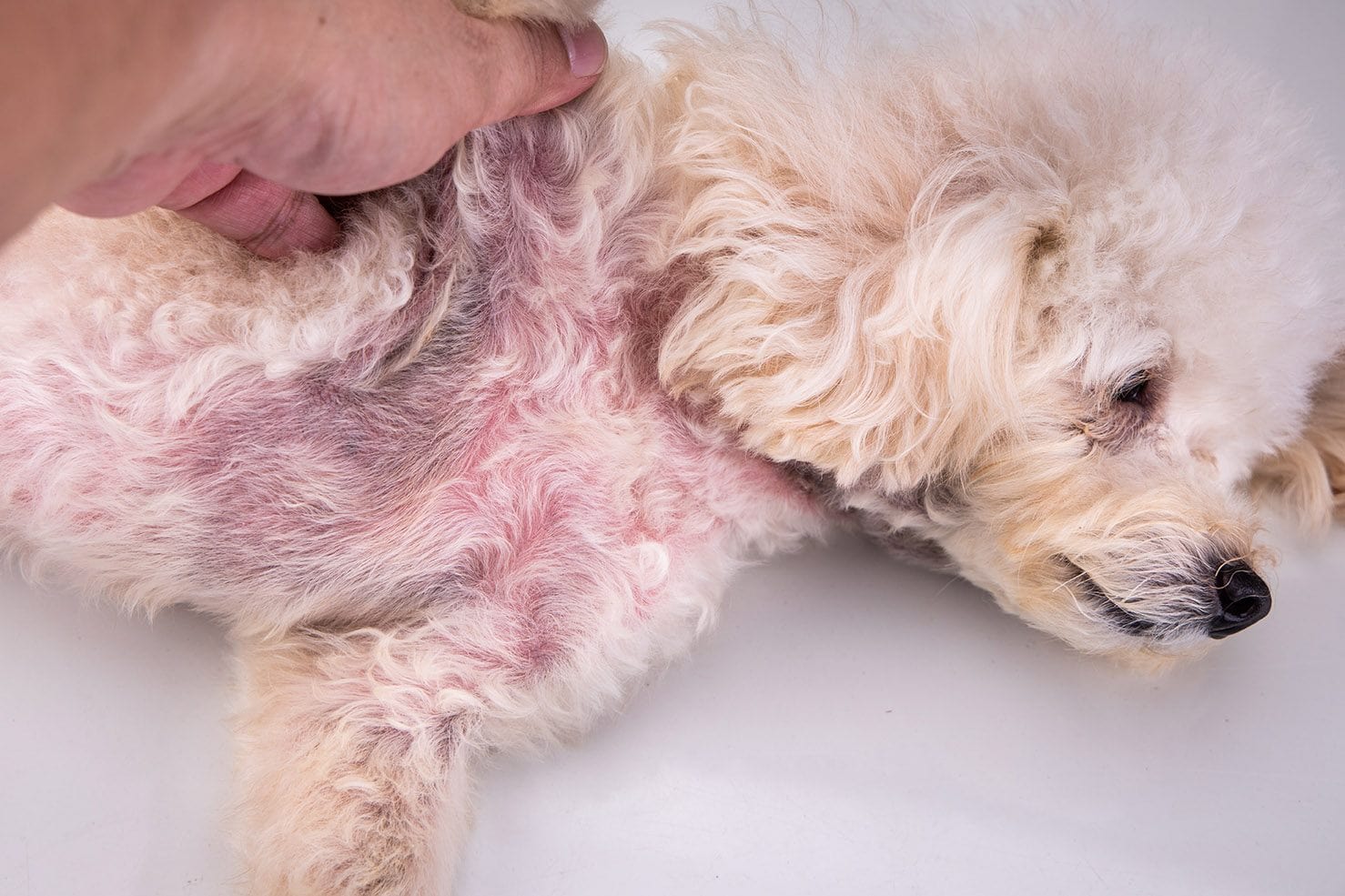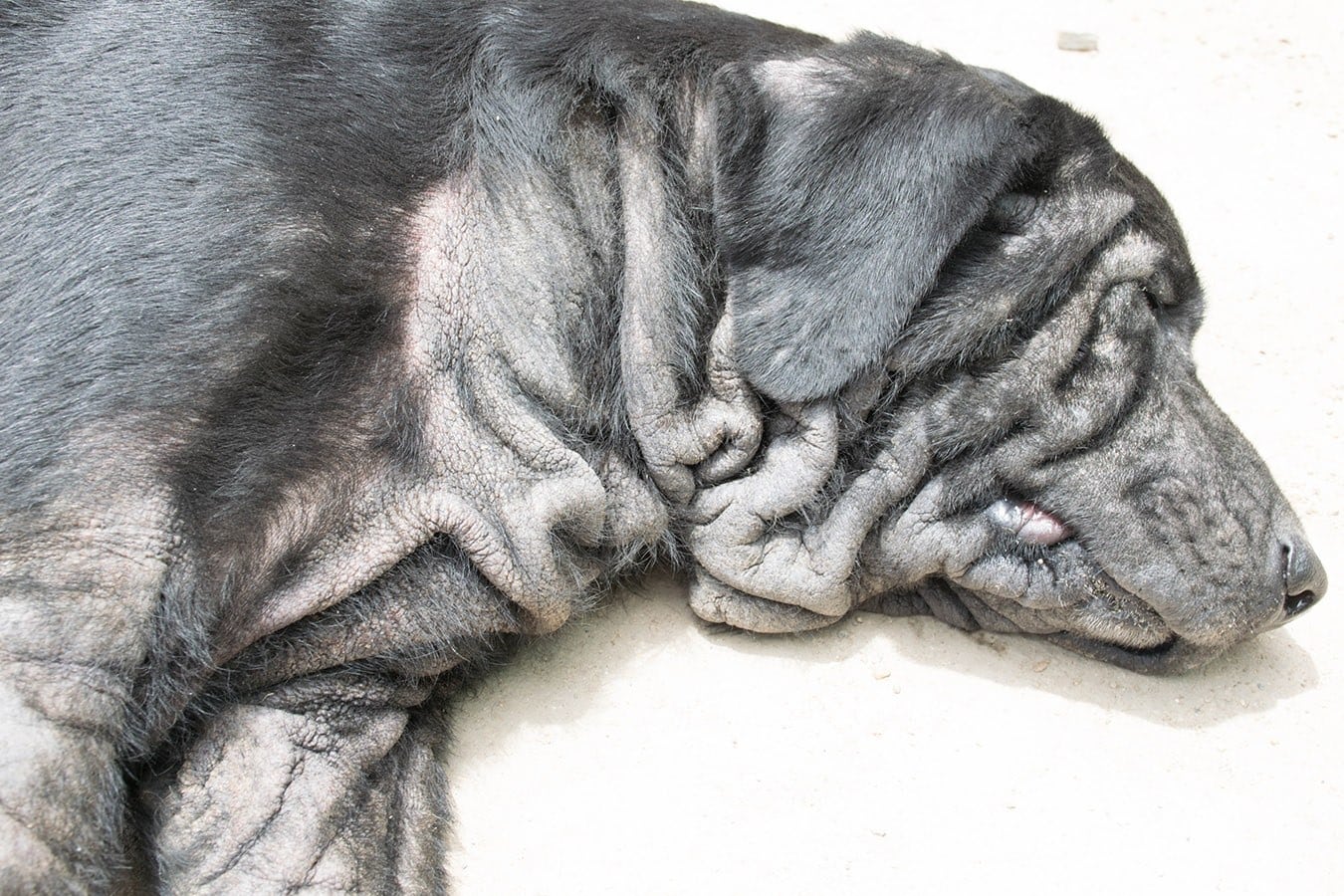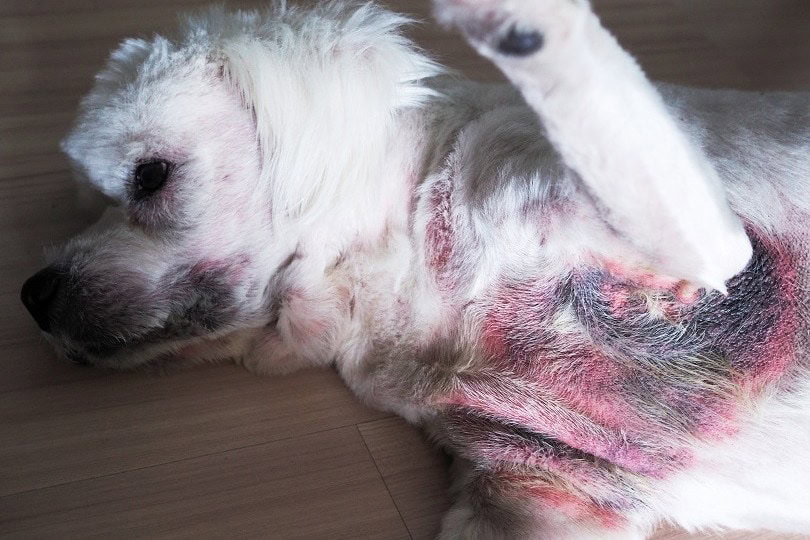VET APPROVED

The information is current and up-to-date in accordance with the latest veterinarian research.
Learn more »Malassezia dermatitis is a common skin condition also known as yeast dermatitis. It’s caused by the Malassezia pachydermatis fungus, which is normal to have on the dog’s skin. However, problems arise when it grows excessively, leading to skin inflammation (a.k.a. dermatitis). This condition can be quite itchy and uncomfortable for your dog and requires prompt treatment. The prognosis is variable, depending on your dog’s underlying problem. Most Malassezia causes are linked to allergic skin disease, which will need to be addressed for a successful outcome.

How Do Dogs Get Malassezia Dermatitis?

The Malassezia fungus is present on all dogs’ skin, and under normal conditions, it doesn’t cause a problem. However, should the skin barrier be damaged or weakened and certain factors such as excess humidity and temperature occur, this yeast might multiply, leading to an infection.
Malassezia dermatitis occurs when the natural balance of yeast on a dog’s skin is disrupted, often due to factors like allergies, chronic skin conditions, immune suppression (from medications like corticosteroids or underlying disorders), or hormonal imbalances such as hypothyroidism. Fortunately, this type of yeast infection is not contagious and cannot be spread to other dogs or humans.
Certain canine breeds seem to experience higher rates of yeast dermatitis than others.1
Common Signs of Yeast Dermatitis
Knowing the signs of yeast dermatitis can help you catch it early and get a headstart on treatment.
- Bald patches
- Itchiness
- Red skin
- Musty odor
- Increased dark pigment in the skin
- Ear infections (otitis)
- Thick skin
- Crusty, flaky skin with scales
Diagnosing Malassezia Dermatitis

Your vet can diagnose this skin condition by obtaining a skin sample and examining it under a microscope.
- Cotton Swab Sample: A moistened cotton swab is rubbed against the skin to collect yeast for examination.
- Impression Smear: A microscope slide is pressed directly against the dog’s skin to collect yeast samples.
- Acetate Tape Preparation: A piece of clear tape is adhered to the skin. The yeast samples stick to the tape upon removal.
- Skin Biopsy: This is the most invasive option, but it also offers the most complete diagnostic information. A biopsy punch is used to take a small piece of the dog’s skin.
Treating Yeast Dermatitis

Depending on how serious your dog’s yeast dermatitis is, or how many areas of the body are affected, they might receive treatment in the form of oral medication, topical treatment, or a combination of the two.
Topical Treatments
Medicated shampoos are commonly used as topical treatments for yeast dermatitis. Anti-fungal shampoos with chlorhexidine in combination with an azole such as miconazole, ketoconazole, clotrimazole, and climbazole used twice weekly, or as directed by your veterinarian, tend to work really well.
When washing your dog with an anti-fungal shampoo, you must allow the shampoo to stay on the skin for 10 minutes or more. Treatment will need to be repeated twice each week for several weeks, depending on the severity and persistence of the infection.
Oral Medication
Oral medications tend to be used for the most severe and repetitive cases of Malassezia dermatitis. Antibiotics may also be required to treat bacterial skin infections that commonly accompany dermatitis. Treatment may last for several months, depending on your dog’s underlying problems, such as different types of allergies, breed anatomy (skin folds), and endocrine disease. Close monitoring of your dog’s blood is required with such medications because they can have serious side effects.

Final Thoughts
Yeast dermatitis—or Malassezia dermatitis, as it’s scientifically known—is a fungal infection of the skin that occurs when a dog’s skin barrier becomes compromised. It can range in severity from mild to extreme and seems to affect certain breeds more than others. Treatment can take the form of oral medication or anti-fungal shampoos, though dogs with severe yeast dermatitis will likely require both.
It’s a curable condition, but if left untreated, it can severely impact your dog’s quality of life.
- Related Read: Fungal Infections in Dogs
Featured Image: Kittima05, Shutterstock












